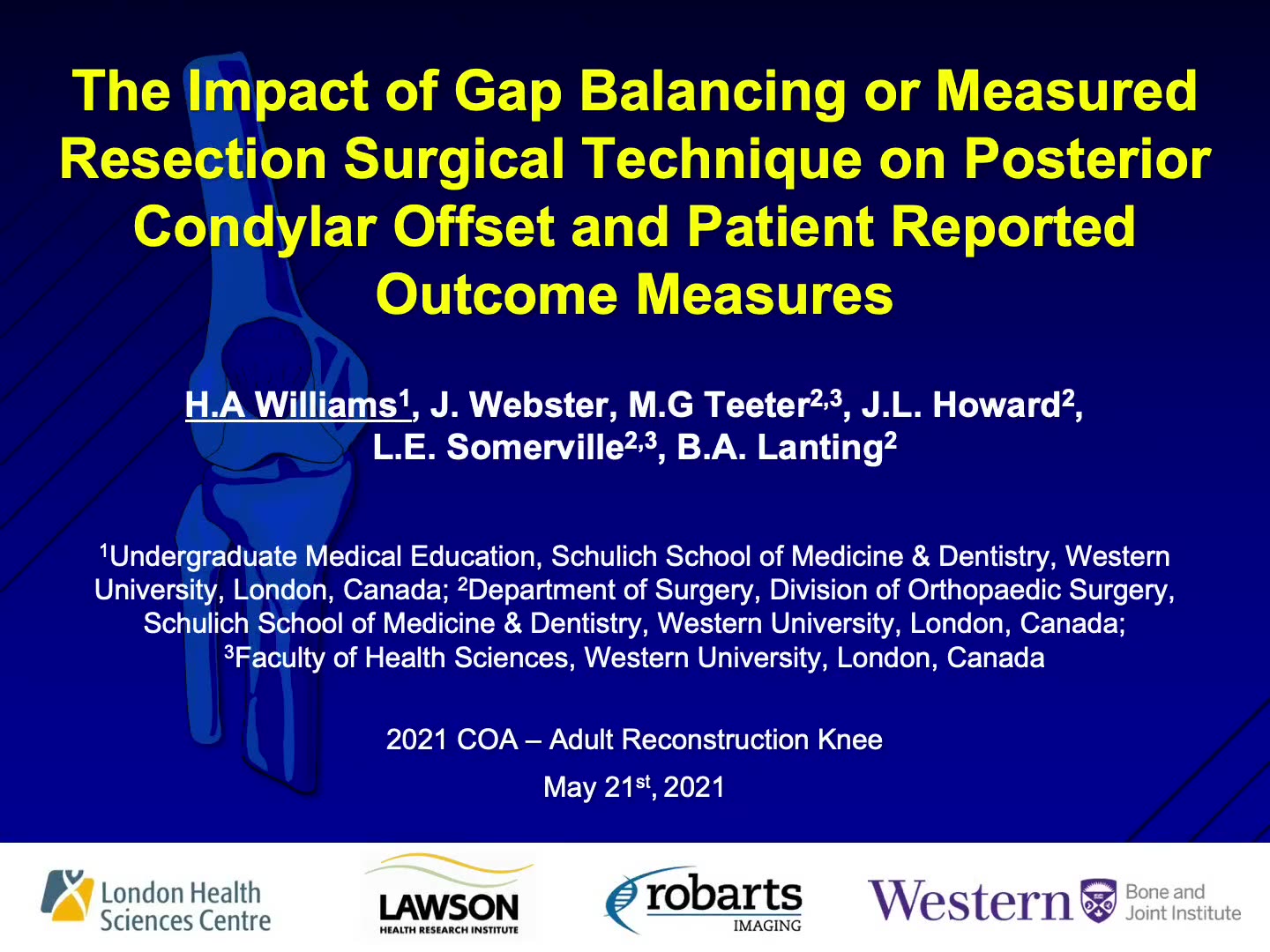Please login to view this media

- Talk
- 15/06/2021
- Canada
The Impact of a Gap Balancing or Measured Resection Surgical Technique on Posterior Condylar Offset and Patient Reported Outcome Measures
Description
The presentation by Harley Williams emphasizes the importance of range of motion as a critical indicator of joint function, particularly in the context of total knee arthroplasty (TKA). Williams discusses two primary surgical techniques utilized to achieve optimal joint function: gap balancing and measured resection. Gap balancing focuses on creating equal gaps in flexion and extension through soft tissue release and bone resection, while measured resection employs predetermined anatomical landmarks for bone cuts, balancing soft tissue afterward. A key point of the research investigates the relationship between posterior condylar offset (PCO) and patient-reported outcomes following surgery. The study hypothesizes that a lesser change in PCO post-operation correlates with better outcomes in terms of range of motion and satisfaction. The analysis includes a cohort of 484 patients, comparing outcomes between those who underwent gap balancing versus measured resection techniques. Both groups demonstrated significant improvements in their range of motion, with no remarkable differences in PCO between techniques at any time point post-op. Overall, the findings suggest consistent patient improvement regardless of the surgical approach, highlighting the importance of using techniques that best suit the patient's needs.
DOI: 10.1302/3114-220802